
Fireworks burst over the Durham Bulls Athletic Park in revitalized downtown Durham, N.C. | All images by Justin Cook.
Made in Durham
By Justin Cook
Through these portraits and landscapes, the series Made in Durham by Justin Cook explores the ways that violence, segregation, and urban renewal affect communities of a post-industrial city in the American South. Cook writes,
Long after the boom and bust of its tobacco industry, Durham, North Carolina, is experiencing another renaissance. But in its resurgence two Durhams are emerging: one revitalized and another left behind. The buildings of old tobacco factories are renovated into hip bars and businesses, while poverty rates hit 85% and high school graduation rates have dipped to 60%.
Locked up and locked out of mainstream employment, young men kill each other to enforce their own economy in these largely African-American neighborhoods. In 2013 there were thirty homicides, and the majority of victims and offenders were black males. Will this Durham be revitalized in an integrated way or will it be further marginalized as the downtown expands?
Durham's struggles are part of an American trend that keeps our country from living up to its potential. Whether there are five-hundred homicides (as in Chicago) or thirty, the pain is the same. But the human spirit persists as new communities are born of violence and strangers band together for support and change.
This is an American story made in Durham.
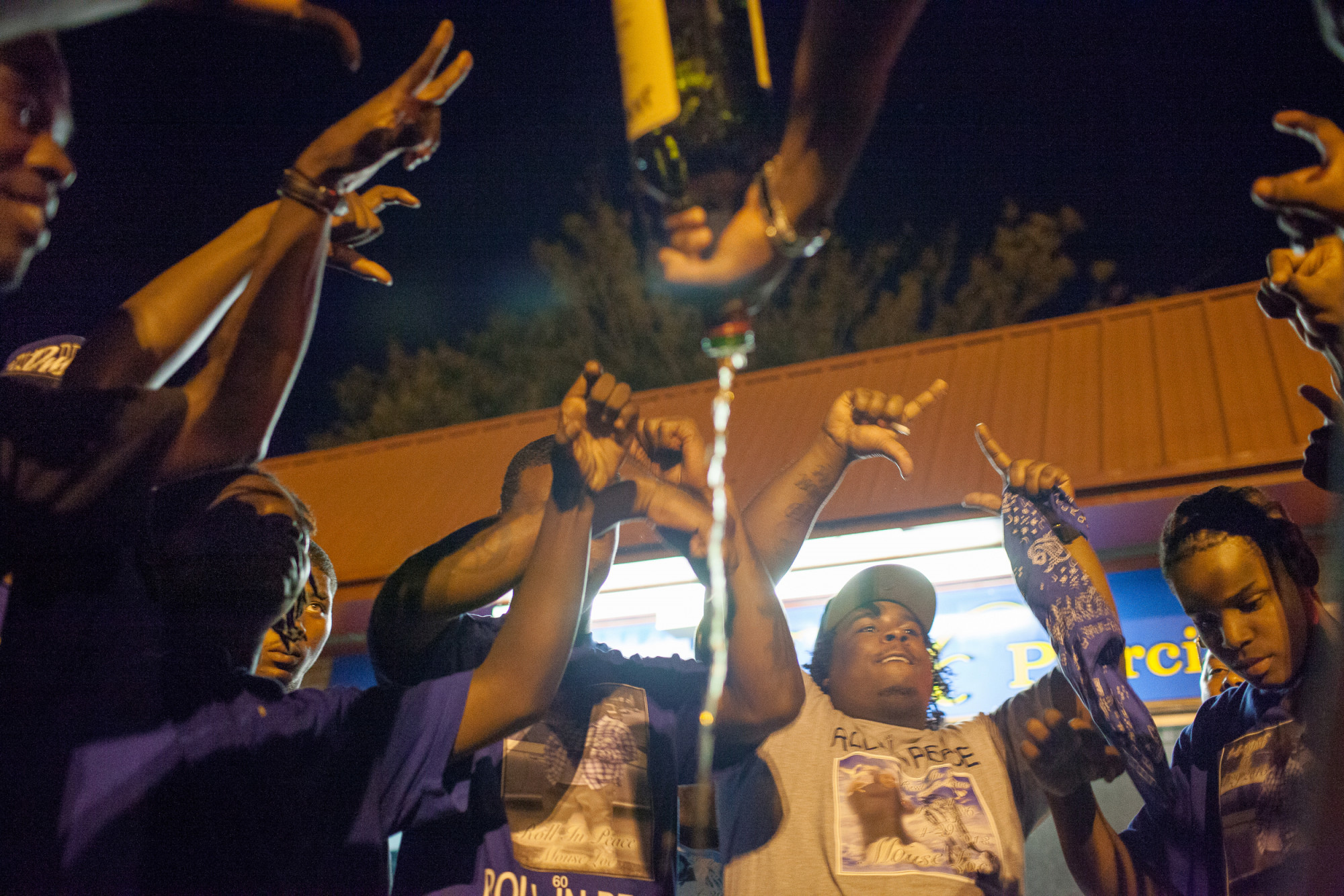
Young Crips gather in a circle to remember a fallen brother by spilling liquor.

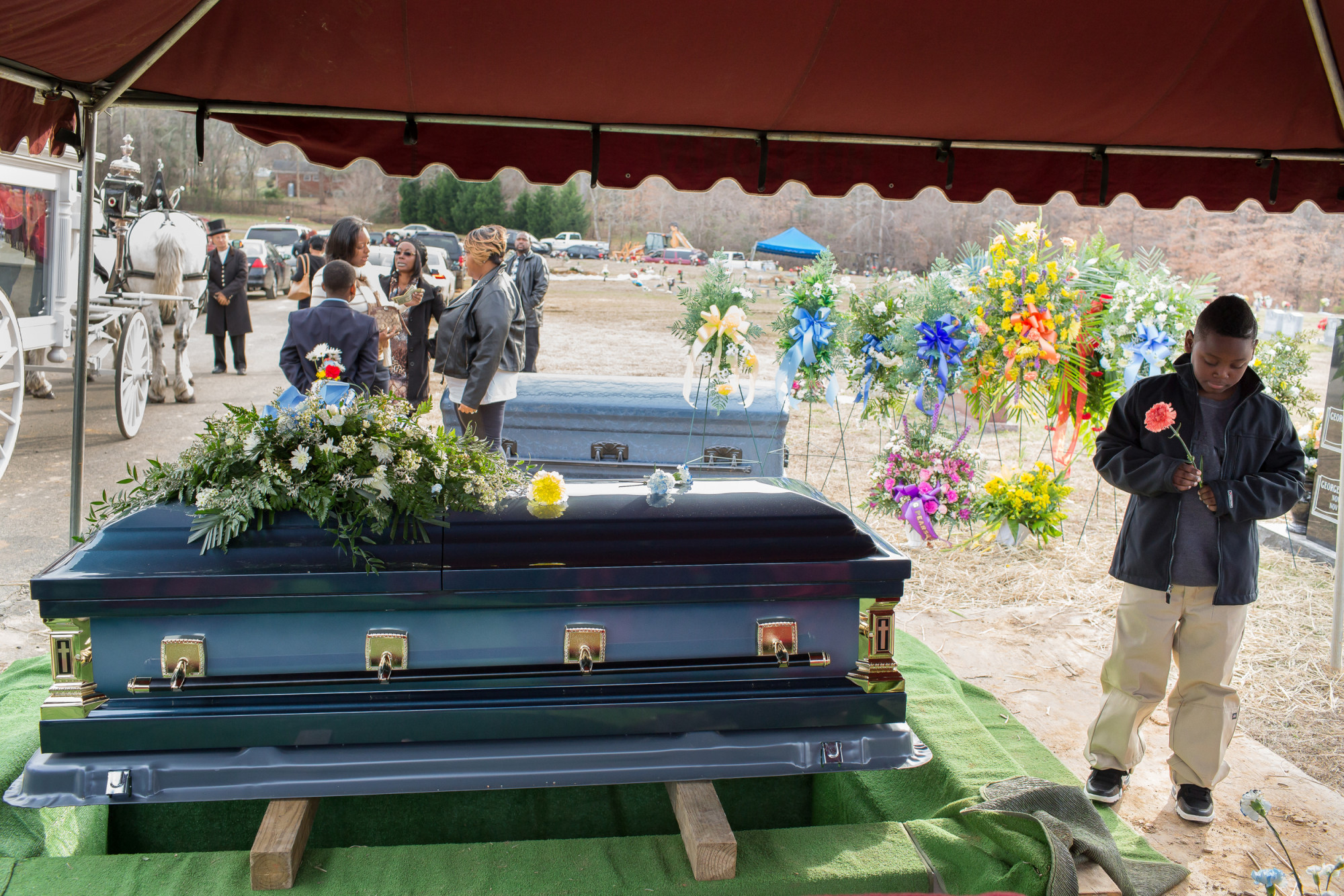
Jaeden was shot in the head January 4, 2014, as he sat in with his mother in their car near their home. He died January 9. His was the first Durham murder of 2014.

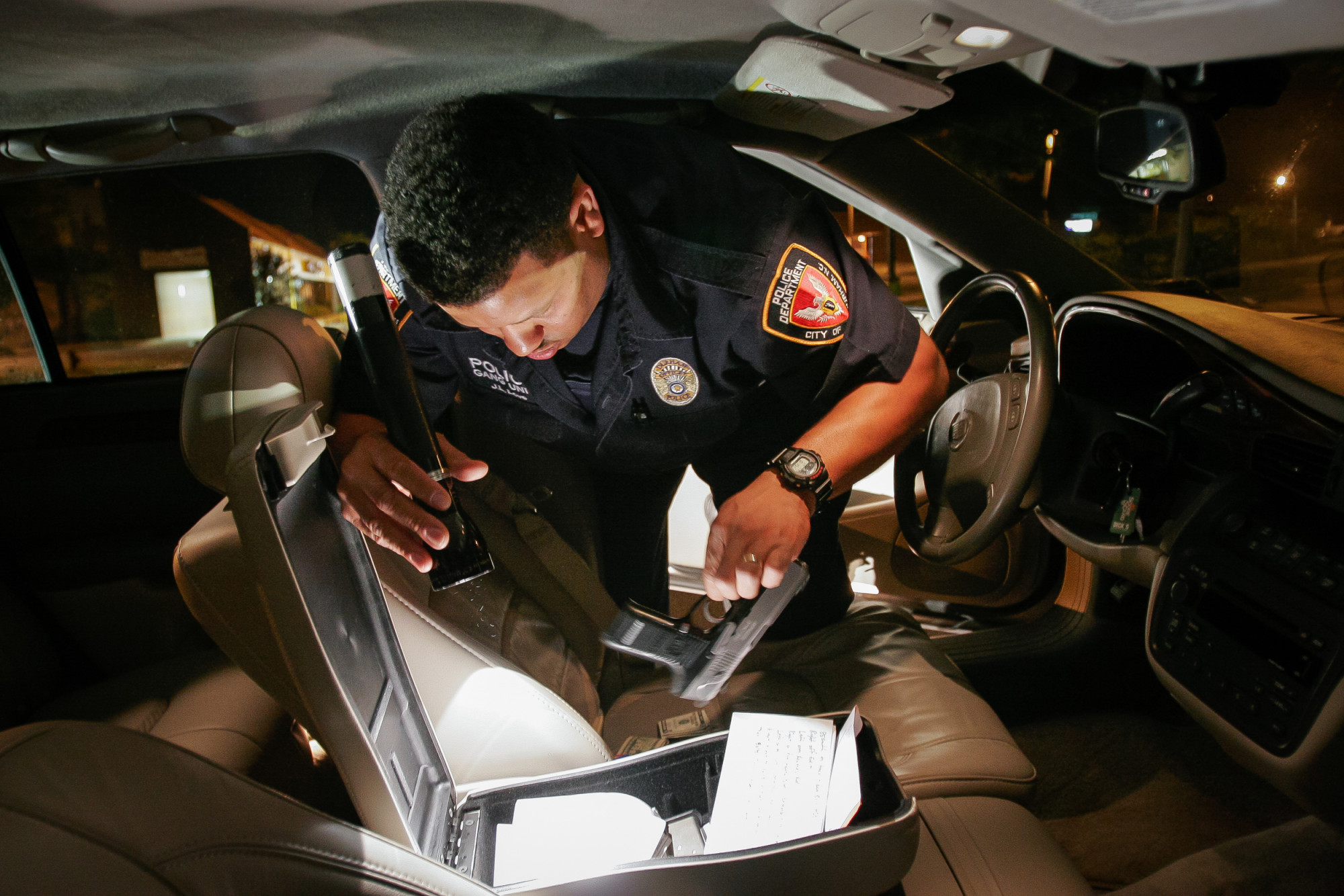
Blood stains a sidewalk hours after a fatal, overnight shooting in East Durham. According to police statistics, there were thirty-seven homicides in Durham in 2005. Twenty-seven (73%) were committed with a firearm. Similar statistics persist in the years since.
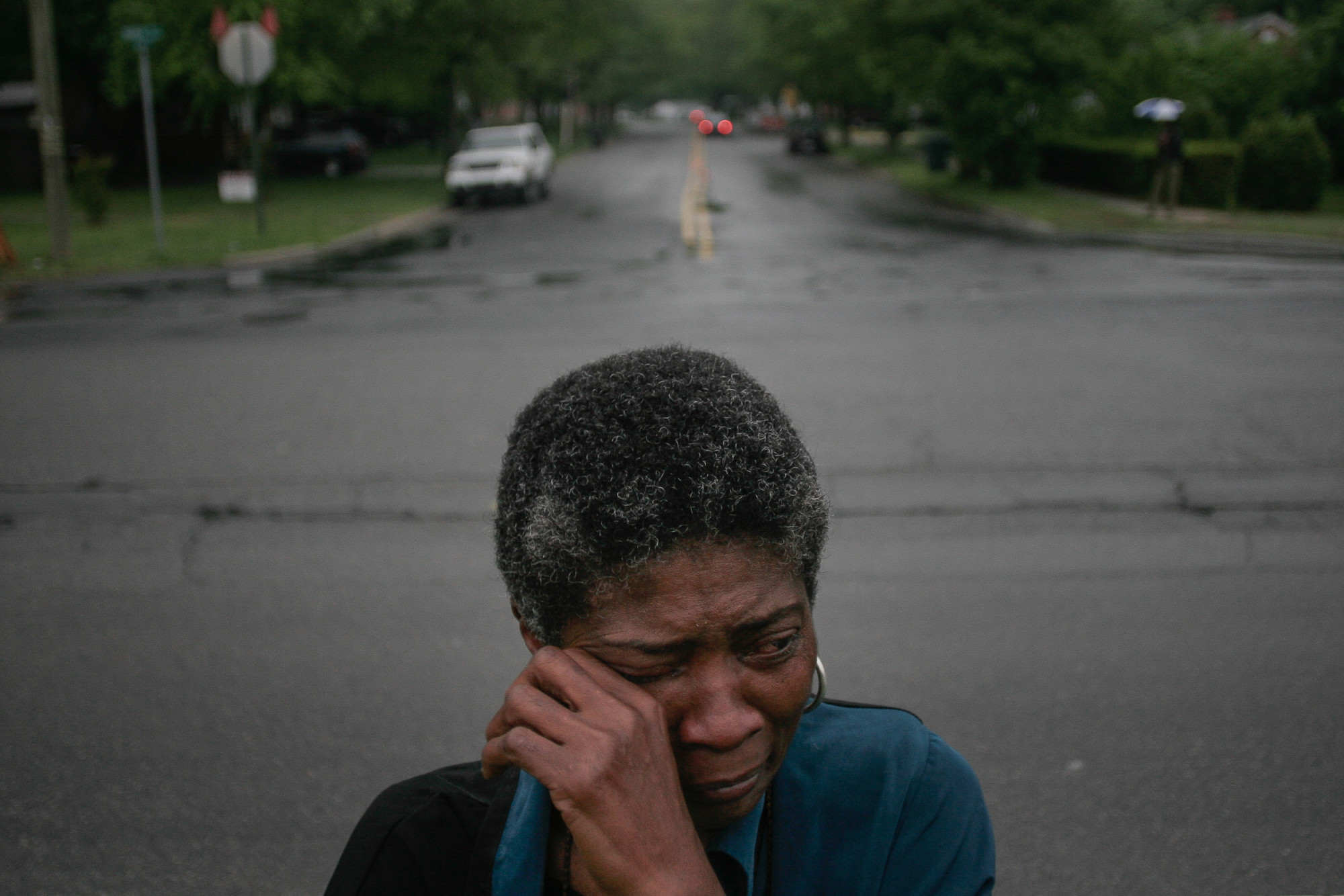
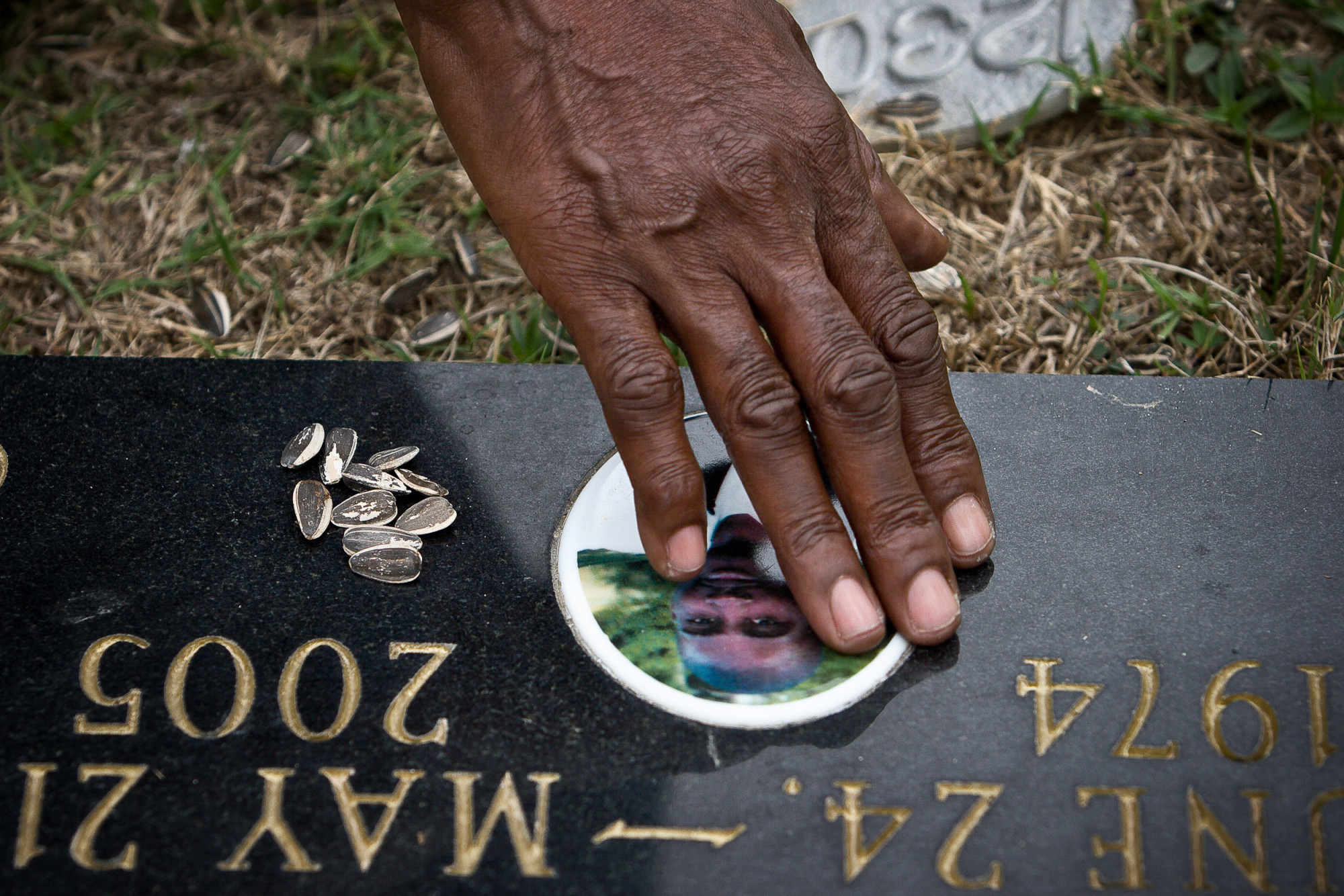
"Since Ray was murdered, I have nightmares. I dream of him in the morgue and when they are cutting his body I wake up because I can feel the knife cutting me," says Joslin Simms, who weeps at the corner of Broad and Leon Streets in Durham where her son Rayburn, 30, was shot to death on May 21, 2005.
A motive and killer for the murder have not been determined. Ray left behind four kids and a mother, all destroyed by his absence. Nationally, the leading cause of death for black males ages 15-34 is homicide. Similarly, homicide was the leading cause of death for black males ages 20-39 in 2009 according to police and a 2011 Durham County Community Health Assessment report.
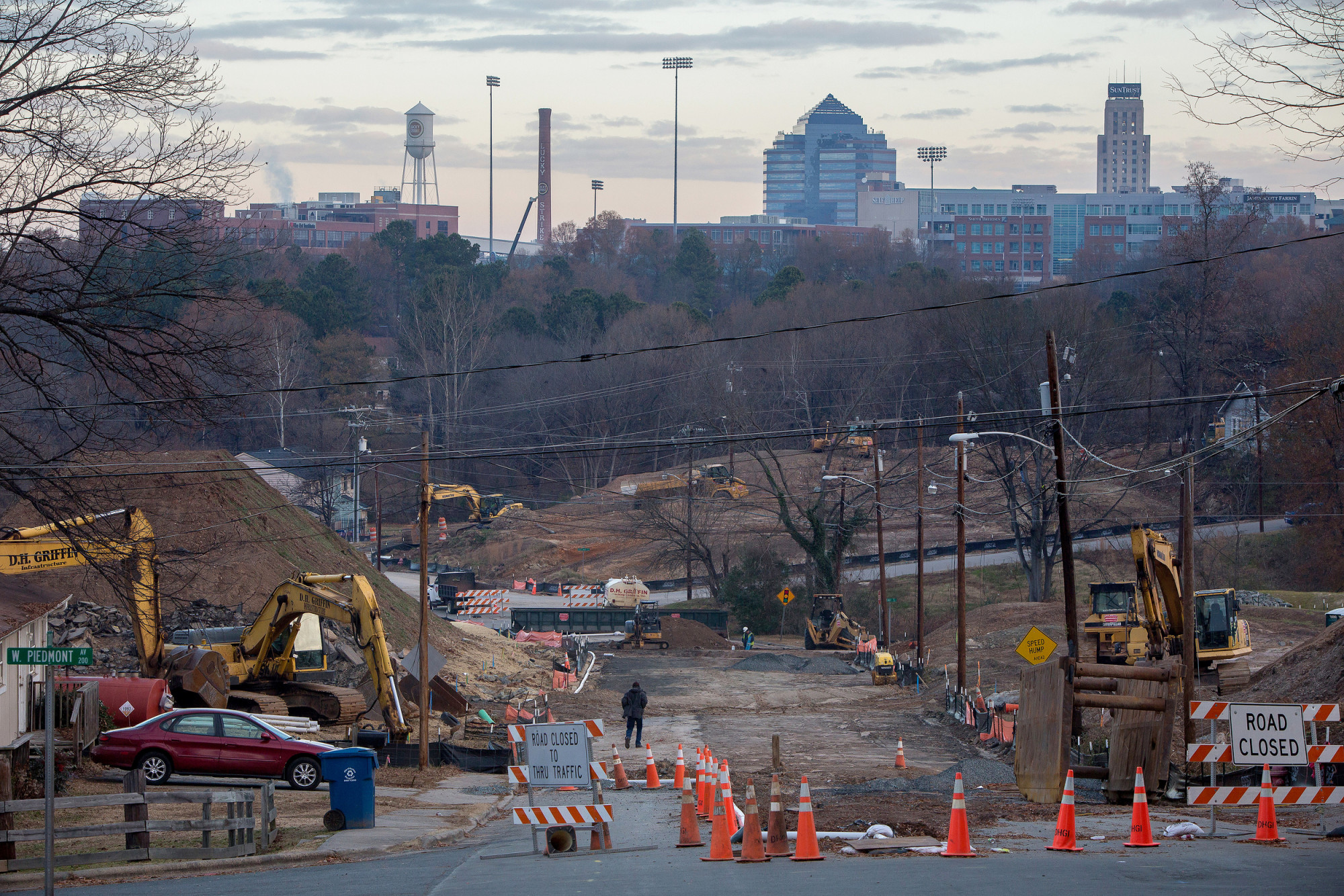
Non-profits have partnered with the city of Durham to reclaim land in the neighborhood as part of an urban renewal project. The goal is to build nice, affordable, low-income housing and revitalize the area. But some Southside residents are weary of gentrification and urban infill in their proud, historically black neighborhood. They look to past urban renewal projects in Durham, including the construction of the Durham Freeway, that they feel dislocated a once centralized and vibrant black community. Many residents dub these projects "Urban Removal."
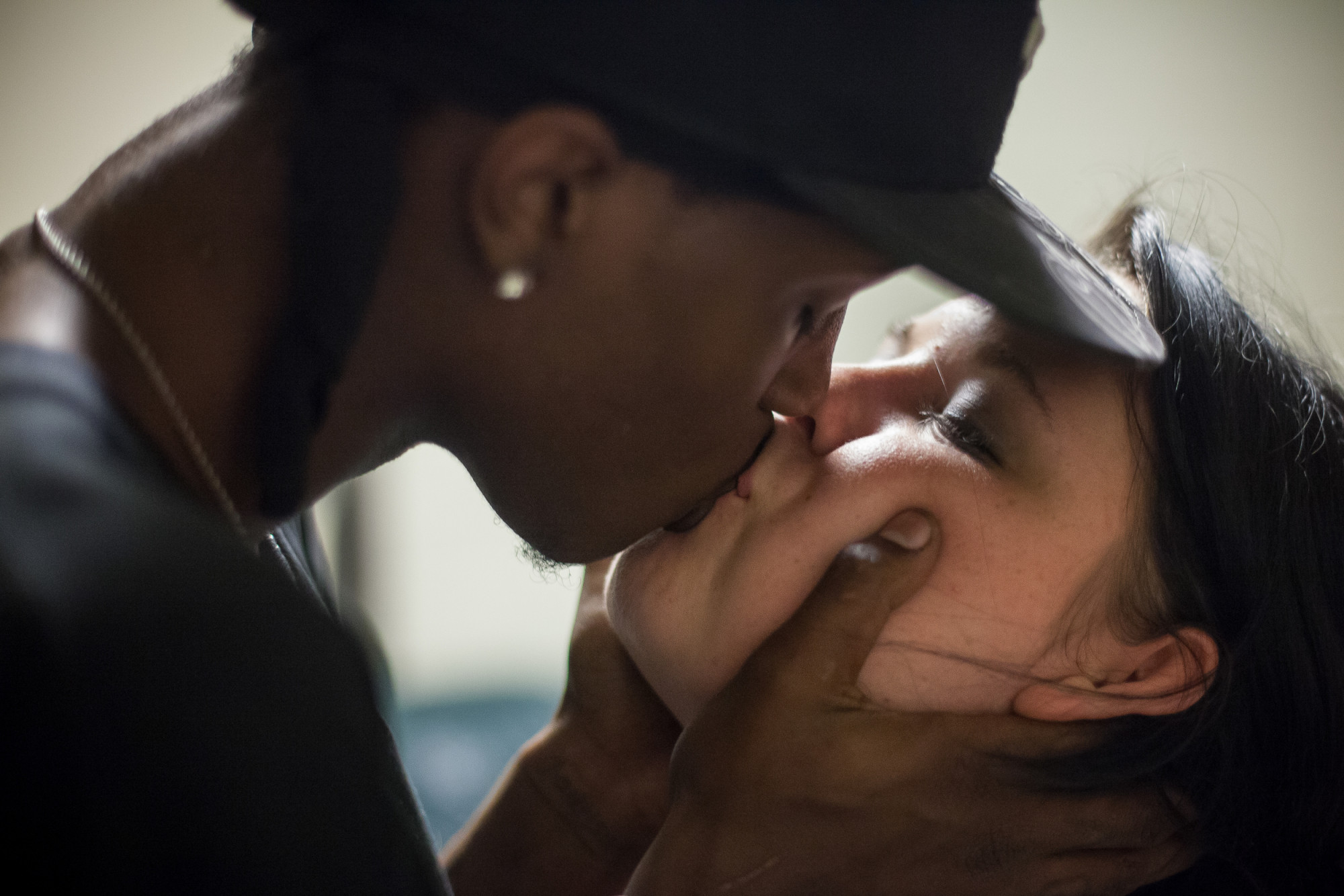
Rashard Johnson kisses his girlfriend Cheyenne after they were apart for several weeks in 2012. They eventually broke up because of the instability caused by Rashard's criminal record.
Rashard grew up without a dad and his mother struggled to make ends meet. By 18 he had been convicted nonviolent property crime felonies. At 20 he has escaped gang life and wants to start over, but is fettered by his past and debts owed from his crimes. As a felon, he faces employment, education, and housing discrimination. He cannot vote and struggles for stability.
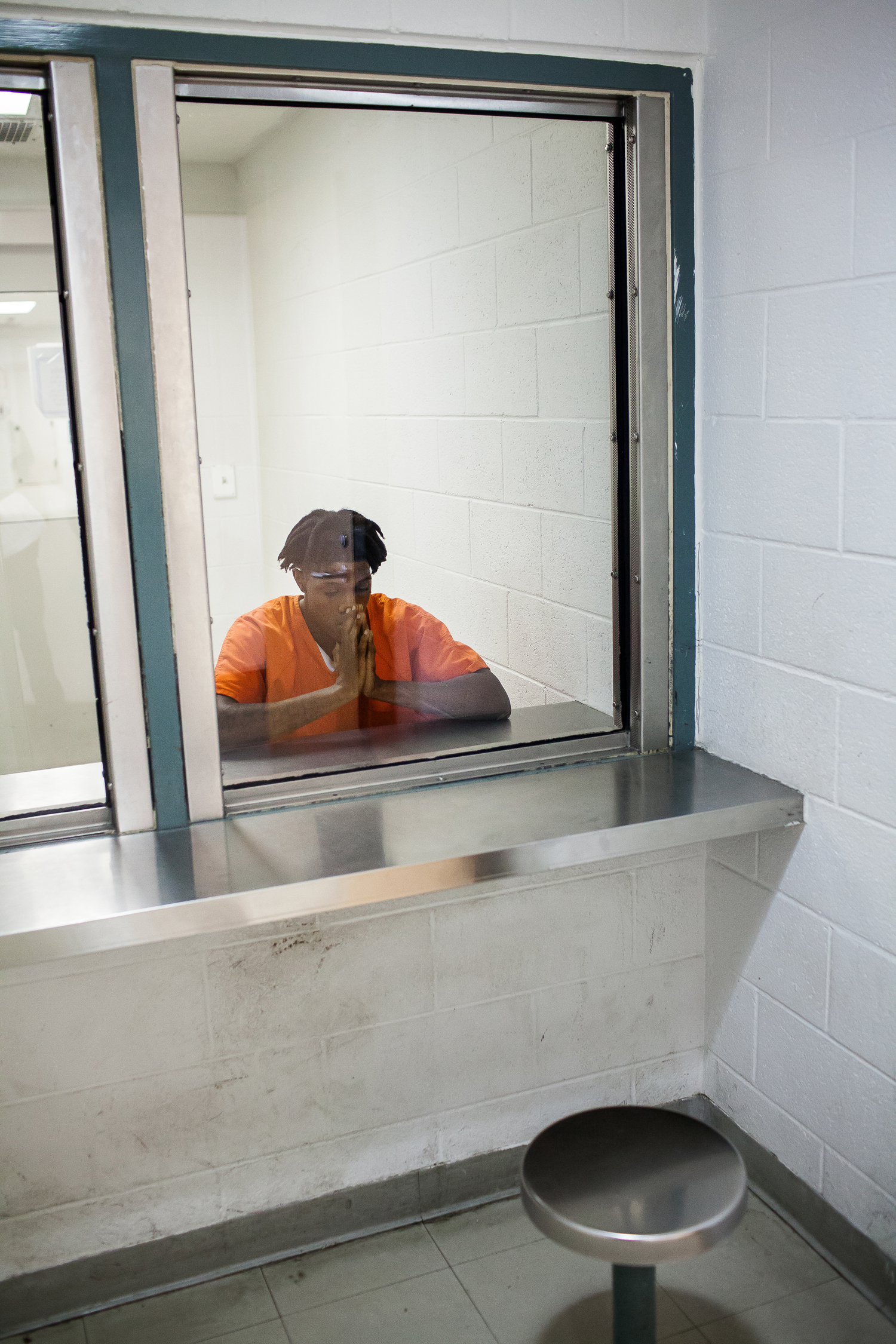
Rashard at the Durham County Detention Center (2012), after being arrested for cutting off his house-arrest ankle monitor, violating his probation, and going on the run for over two months. Without a GED or a job, Rashard couldn't repay his debt and succumbed to the frustration.
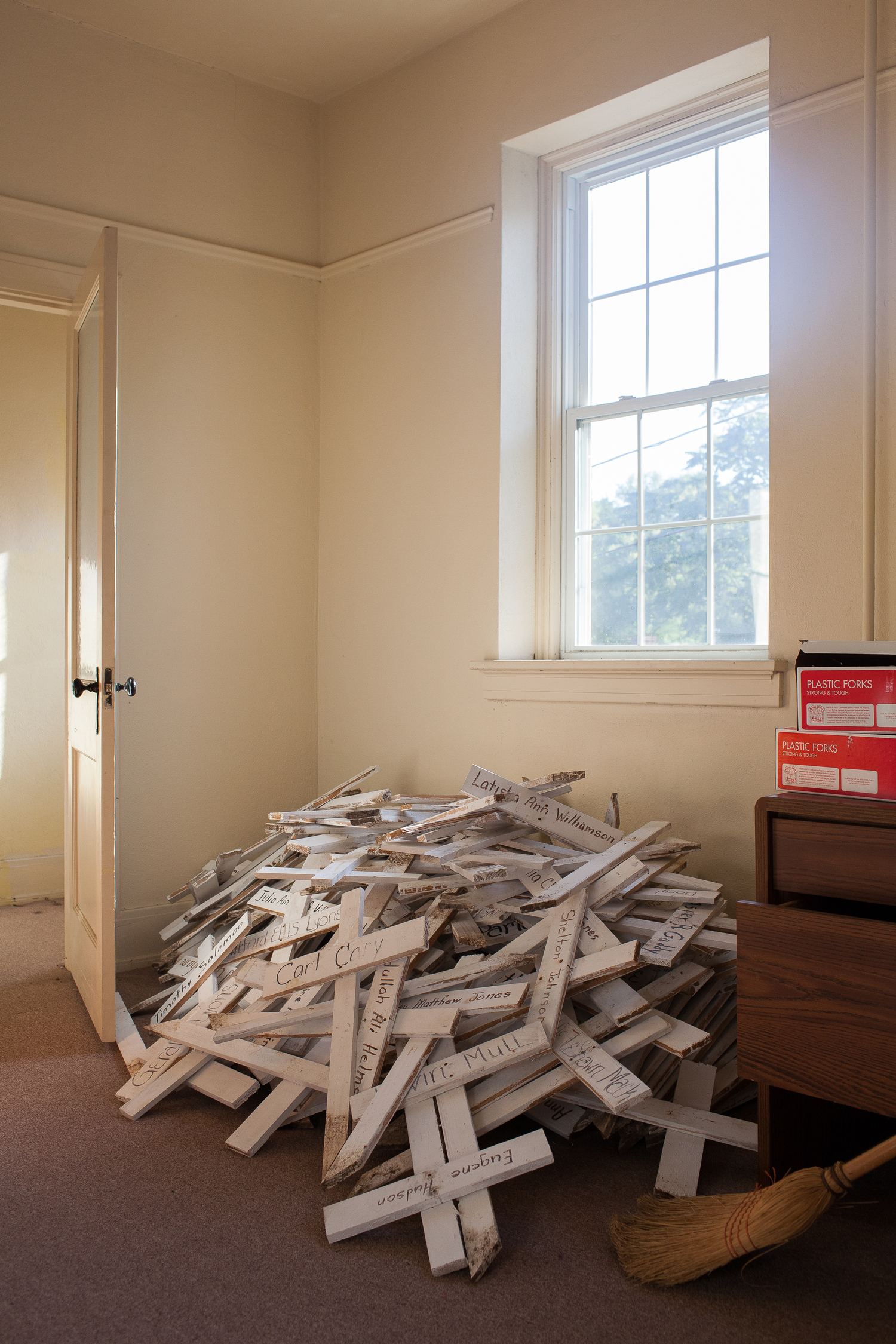

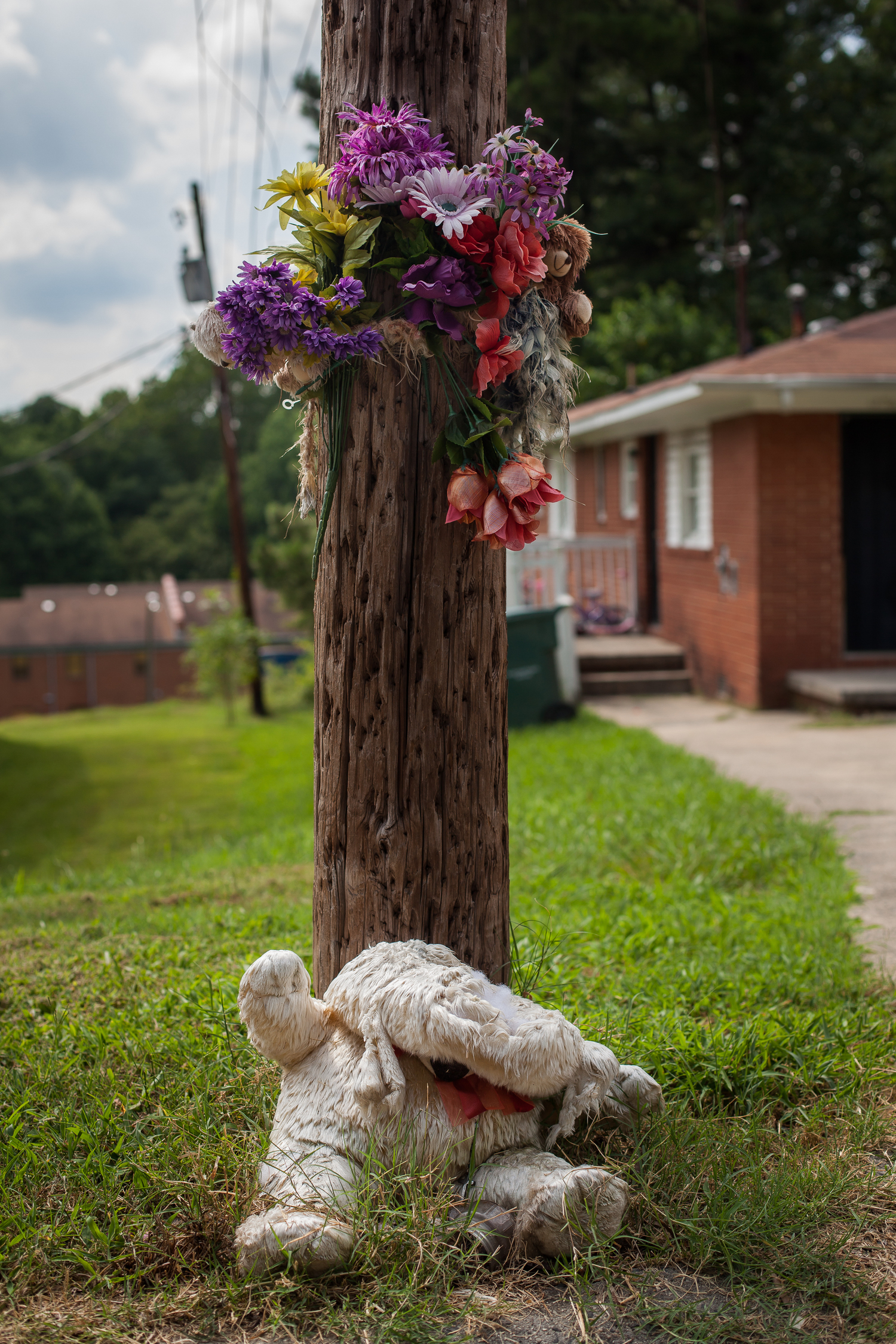
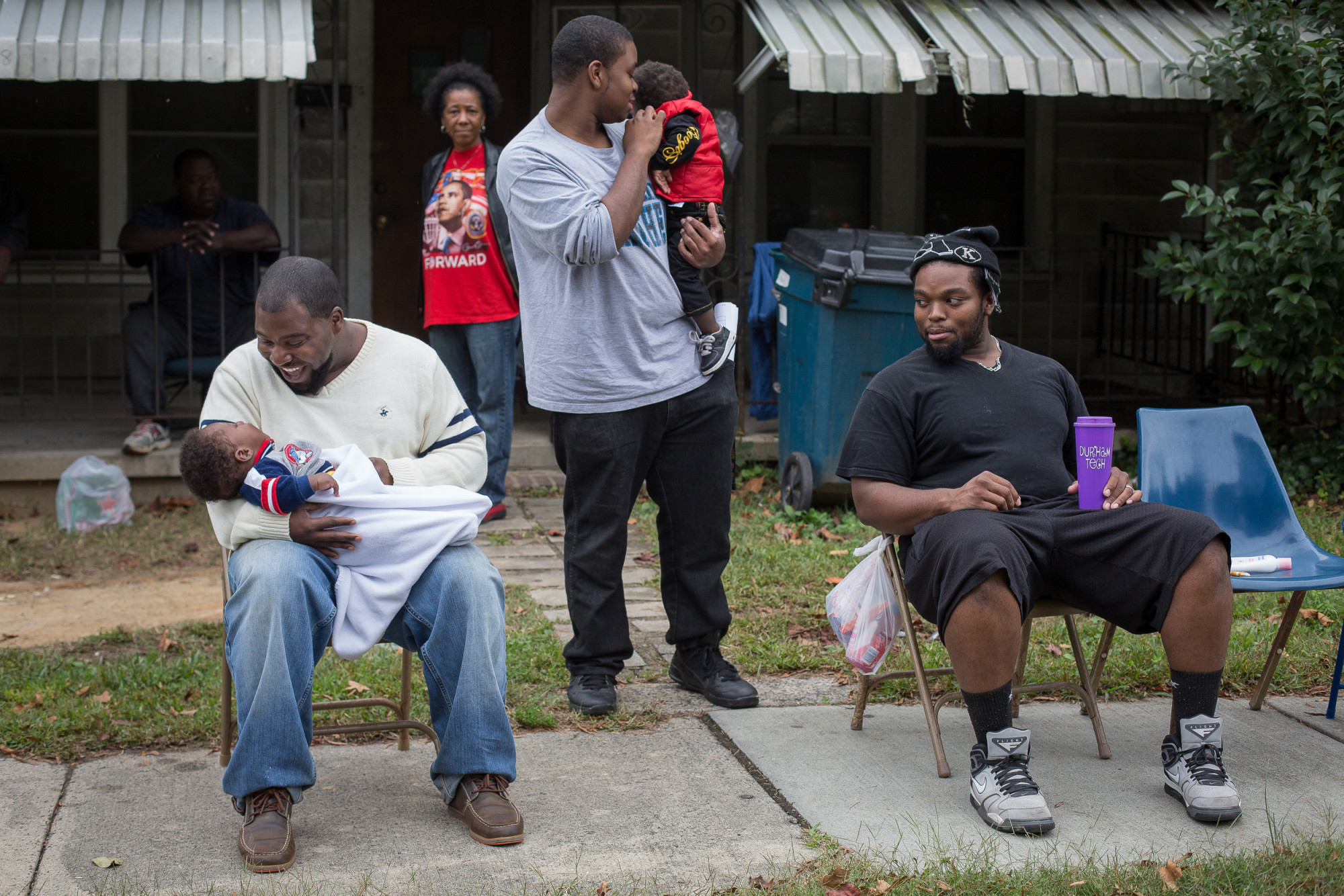
Young men revel along Fayetteville Street during Hillside High School's homecoming parade. Hillside has a predominantly African-American student population and serves many low-income communities in east and south Durham. Hillside once had graduation rates as low as 50% but has improved it to 83%.
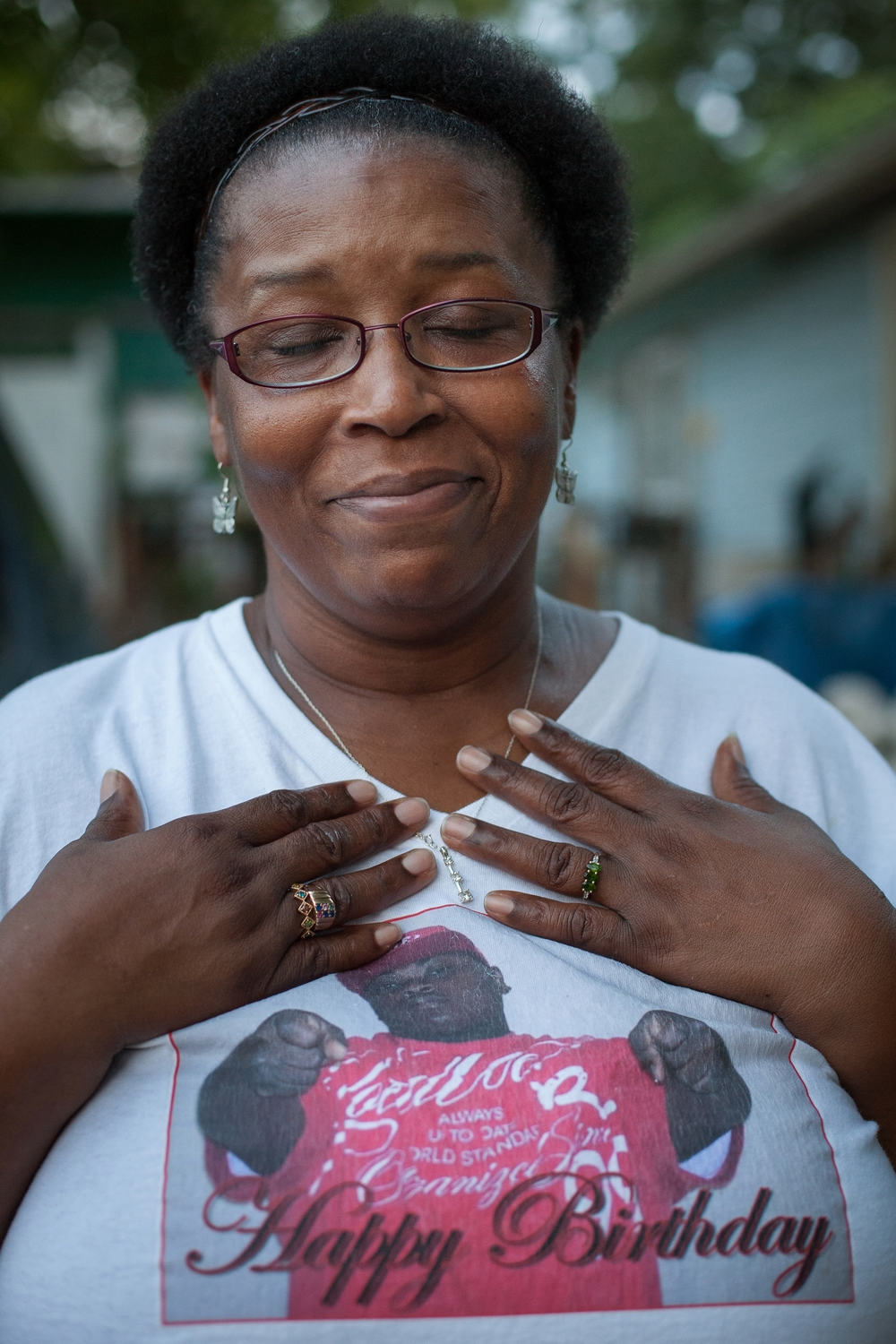
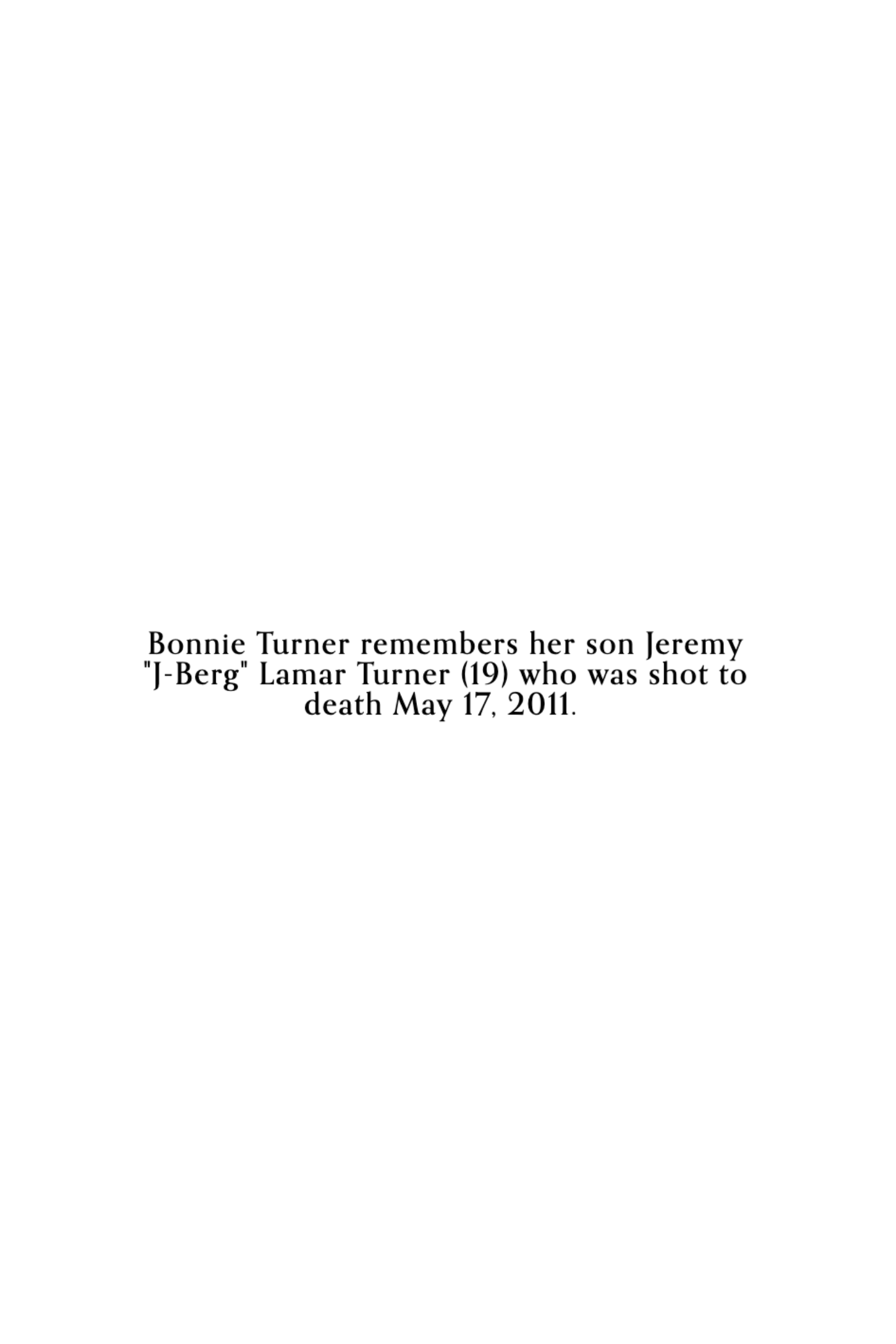
Bonnie misses his embrace the most: "I just felt safe when he hugged me. I felt loved, I felt special."
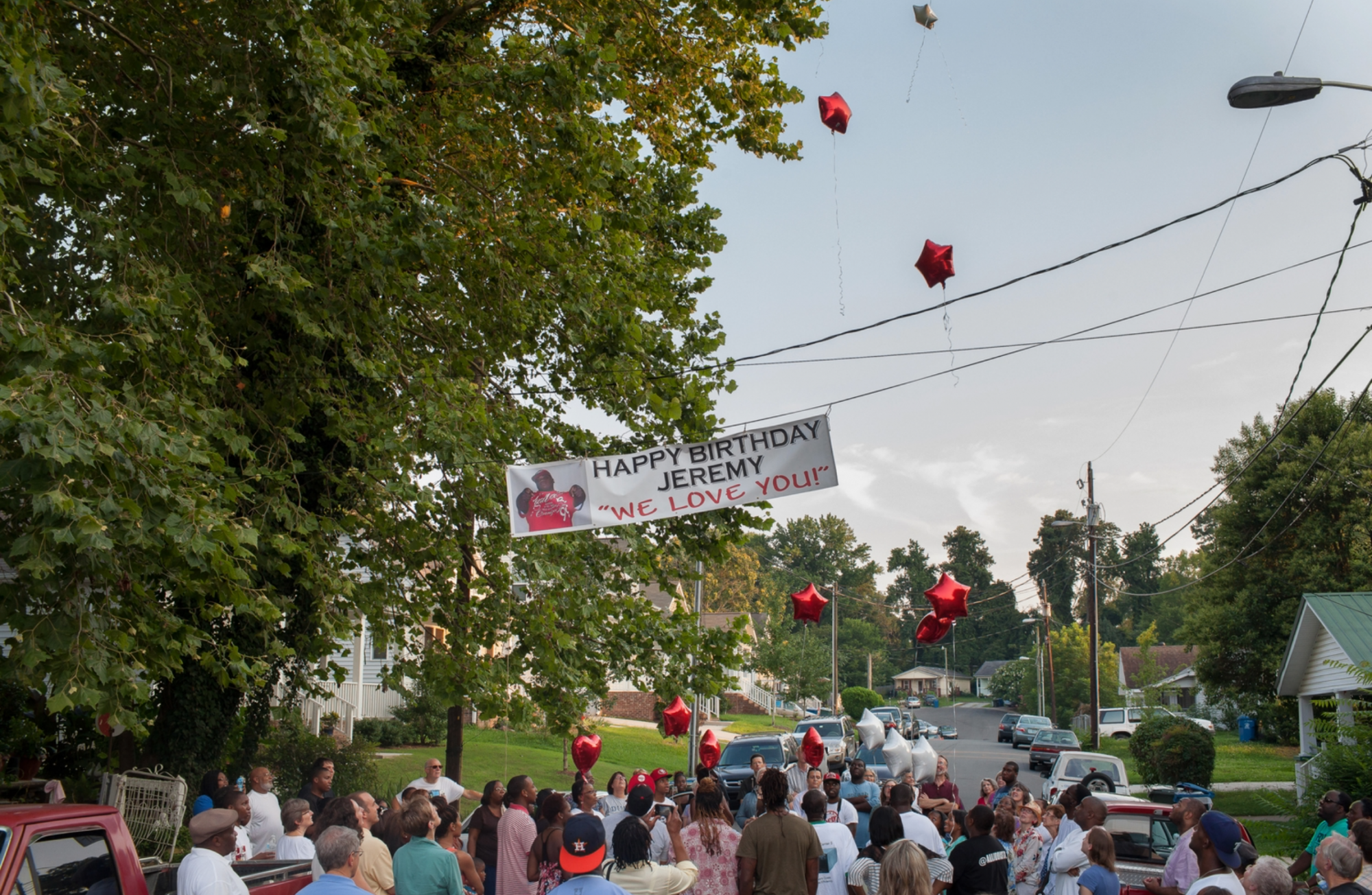
About 100 friends and family gathered July 17, 2013 at the family home on Gerard Street in Durham to celebrate what would have been Jeremy’s 22nd birthday.
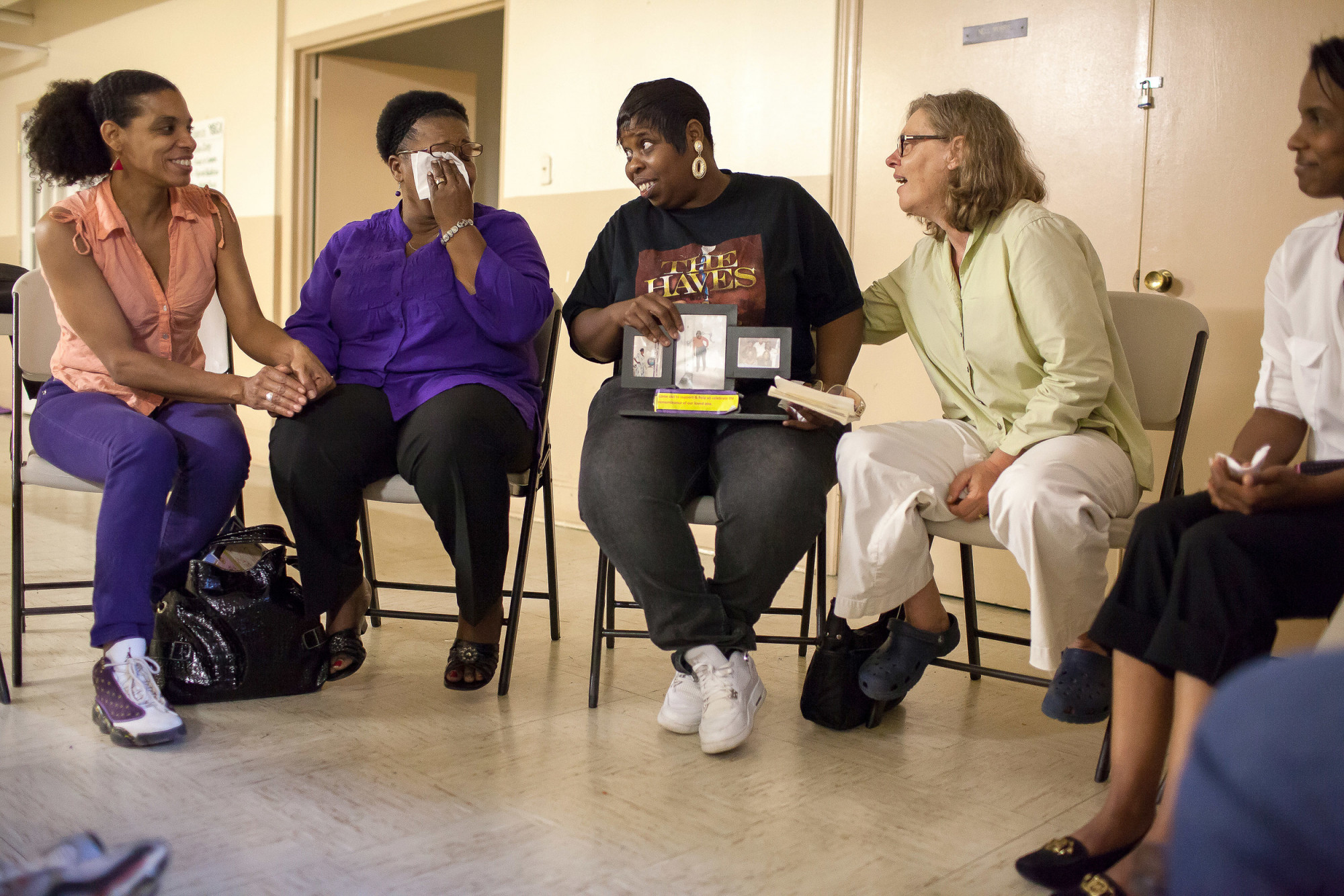
Carrie Watkins, center, whose daughter was shot and killed in 2008, comforts Bonnie Turner, second from left. Community is formed from grief as mothers laugh and weep when they remember their murdered sons and daughters during a Circle of Hope and Healing. This monthly meeting is held for grieving parents by The Religious Coalition for a Nonviolent Durham at Shepherd's House United Methodist Church in East Durham.

A man who calls himself “Lil’ Salt” flexed in triumph after climbing the corner store dressed as Spider-Man during Halloween festivities in Durham's Southside neighborhood. The Southside spirit persists despite violence and blight in the past decade. The community is changing rapidly under the City of Durham's redevelopment plans.



